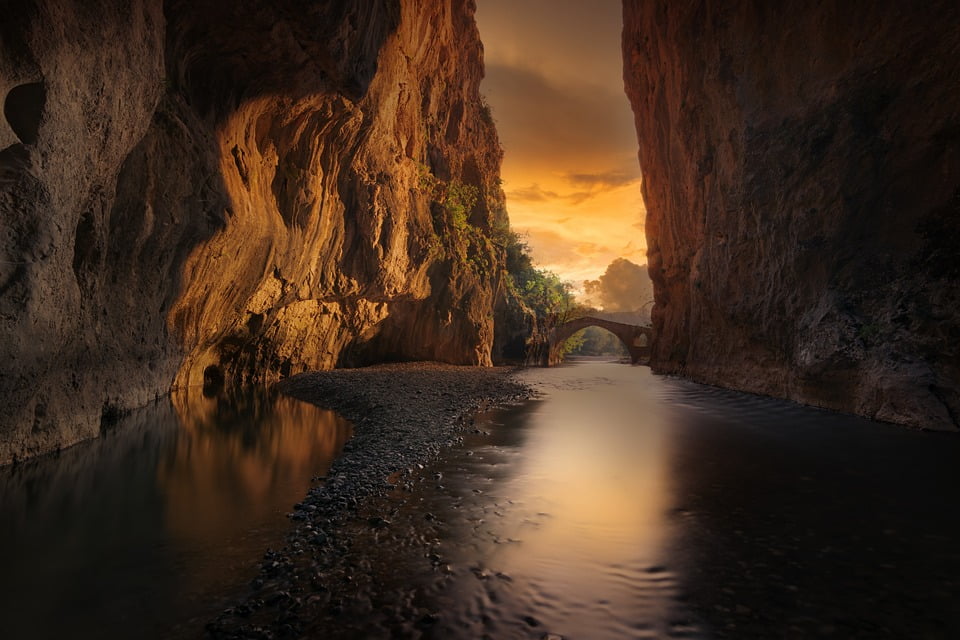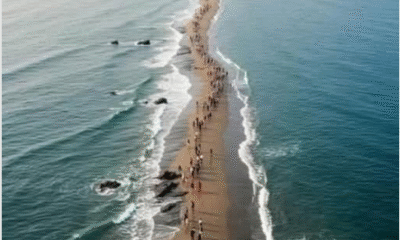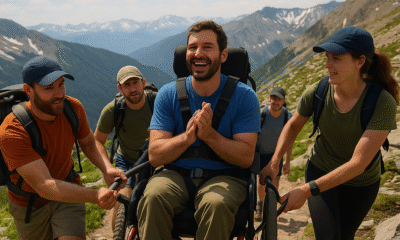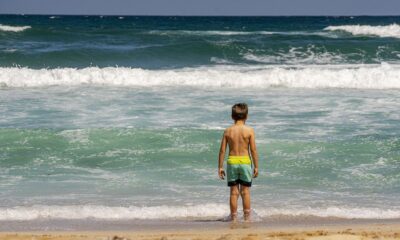Travel FAQs
Planning a 3-Day Big Island Adventure: What Should I Do?

What are the must-see attractions on the Big Island?
When visiting the Big Island, one of the must-see attractions is Hawaii Volcanoes National Park. Here, you can witness the power of an active volcano up close and explore the unique volcanic landscapes. Another popular destination is the Pu’uhonua o Honaunau National Historical Park, where you can learn about Hawaiian history and culture.
In addition, don’t miss out on the chance to visit Akaka Falls State Park, home to a stunning 442-foot waterfall surrounded by lush tropical vegetation. If you’re a fan of marine life, consider taking a snorkeling or diving trip to Kealakekua Bay, where you can swim alongside colorful fish and even spot dolphins.
How can I experience the local culture on the Big Island?
To experience the local culture on the Big Island, consider attending a traditional Hawaiian luau. These events typically feature hula performances, delicious local cuisine, and demonstrations of traditional arts and crafts. You can also visit the various farmers markets around the island to sample fresh produce and handmade goods from local vendors.
For a deeper dive into Hawaiian culture, consider visiting the Hulihe’e Palace in Kailua-Kona, a historic royal residence that now serves as a museum showcasing Hawaiian artifacts and history. You can also explore the Puako Petroglyph Archaeological Preserve, where you can see ancient rock carvings created by early Hawaiian settlers.
What outdoor activities are available on the Big Island?
The Big Island offers a wide range of outdoor activities for adventure seekers. You can go hiking in the lush rainforests of Akaka Falls State Park, or take a helicopter tour to get a bird’s eye view of the island’s volcanic landscapes. For water enthusiasts, consider trying stand-up paddleboarding or kayaking along the island’s pristine coastline.
If you’re looking for a more relaxing outdoor experience, consider spending a day at one of the Big Island’s many beautiful beaches. Whether you prefer white sandy shores or rugged black sand beaches, you’ll find the perfect spot to soak up the sun and enjoy the island’s natural beauty.
Where can I find the best dining options on the Big Island?
The Big Island is home to a diverse culinary scene, with plenty of dining options to suit every palate. For fresh seafood and waterfront dining, head to the town of Hilo or the resort area of Waikoloa. You can also find delicious farm-to-table cuisine at restaurants in towns like Volcano and Hawi.
For a taste of traditional Hawaiian cuisine, be sure to try local specialties like poke (raw fish salad) and kalua pig (slow-cooked pork). Don’t forget to save room for dessert – be sure to sample some Hawaiian shave ice or fresh pineapple for a sweet treat.
Conclusion
Planning a 3-day adventure on the Big Island of Hawaii is sure to be an unforgettable experience. With so many activities to choose from, you’ll have no shortage of options for exploring the island’s natural beauty, rich culture, and delicious cuisine. Whether you’re seeking adventure or relaxation, the Big Island has something for everyone.
FAQs
1. Is it safe to visit Hawaii Volcanoes National Park?
Yes, Hawaii Volcanoes National Park is a popular tourist destination and is generally considered safe for visitors. However, it’s important to follow park guidelines and stay informed about any volcanic activity that may be occurring during your visit.
2. Can I swim with dolphins in Kealakekua Bay?
While dolphins are known to frequent Kealakekua Bay, it’s important to respect these animals’ natural habitat and avoid disturbing them. If you do encounter dolphins while snorkeling or diving, observe them from a respectful distance without approaching too closely.
3. What should I wear to a traditional Hawaiian luau?
For a traditional Hawaiian luau, it’s best to wear comfortable, casual attire such as a sundress or aloha shirt. You may also want to bring a light sweater or jacket for cooler evenings, as many luaus take place outdoors.
4. Are there any vegetarian dining options on the Big Island?
Yes, many restaurants on the Big Island offer vegetarian or vegan menu options to accommodate dietary preferences. Be sure to check with the restaurant ahead of time to inquire about their vegetarian offerings.
5. What is the best time of year to visit the Big Island?
The best time to visit the Big Island is during the dry season, which runs from April to October. During this time, you can expect warm, sunny weather and fewer crowds, making it an ideal time for outdoor activities and sightseeing.
Travel FAQs
What is the equivalent of 15 000 quetzales in dollars?

[ad_1]
In this article, we will discuss the equivalent value of 15,000 quetzales in dollars. Many travelers often find themselves in need of converting currency, and understanding the value of money in different countries can be essential when planning a trip. We will break down the conversion rate between quetzales and dollars, providing a clear answer to the question at hand.
What is the current exchange rate between quetzales and dollars?
The current exchange rate between the Guatemalan quetzal (GTQ) and the US dollar (USD) fluctuates daily based on market conditions. As of [insert date], the exchange rate is [insert exchange rate]. Therefore, to calculate the equivalent of 15,000 quetzales in dollars, you would multiply the amount of quetzales by the exchange rate.
For example, if the exchange rate is 1 GTQ to 0.13 USD, then 15,000 GTQ would be equivalent to 1,950 USD.
How can I find the most up-to-date exchange rate?
To find the most current exchange rate between quetzales and dollars, you can check financial websites, use a currency conversion app, or visit a local bank or currency exchange center. It’s important to verify the exchange rate before making any financial transactions to ensure you are getting the most accurate value for your money.
Is it better to exchange money before traveling or at my destination?
The decision to exchange money before traveling or at your destination depends on various factors, such as convenience, exchange rates, and fees. In some cases, exchanging money at your destination may offer better rates, while in others, it may be more advantageous to exchange currency beforehand.
It is recommended to compare exchange rates and fees from different sources and calculate the total cost of conversion to determine the best option for your specific situation.
Are there any fees associated with exchanging currency?
Yes, there are often fees associated with exchanging currency, whether you do it at a bank, currency exchange center, or through other means. These fees can vary based on the provider and the amount of money being exchanged. It’s essential to inquire about any applicable fees before proceeding with the exchange to avoid any surprises.
When is the best time to exchange currency for travel?
The best time to exchange currency for travel is when the exchange rate is favorable and meets your budgetary needs. However, trying to predict currency fluctuations can be challenging, so it’s advisable to monitor exchange rates regularly and exchange money when you feel comfortable with the value.
Conclusion
In conclusion, the equivalent of 15,000 quetzales in dollars can fluctuate based on the current exchange rate between the two currencies. By understanding how to calculate this conversion and where to find updated exchange rates, travelers can make informed decisions when it comes to handling currency during their trips. It is essential to consider factors such as fees, timing, and convenience when exchanging money to maximize the value of your funds.
FAQs
1. Can I use my credit or debit card instead of exchanging currency?
Yes, you can use your credit or debit card for purchases during your travels. However, be aware of foreign transaction fees and exchange rates applied by your card issuer.
2. Should I exchange all my money at once or in smaller increments?
It is generally recommended to exchange money in smaller increments to avoid carrying large amounts of cash and to take advantage of potentially better exchange rates at different times.
3. Can I exchange leftover currency back to my local currency after my trip?
Yes, you can usually exchange leftover currency back to your local currency, but be aware of exchange fees and rates that may apply.
4. Are there ATMs available for withdrawing cash while traveling?
Most countries have ATMs available for withdrawing cash, but be sure to check with your bank about international withdrawal fees and currency conversion rates.
5. What documents do I need to exchange money at a bank or currency exchange center?
You will typically need a valid photo ID, such as a passport, when exchanging money at a bank or currency exchange center. Some places may require additional paperwork for larger transactions.
[ad_2]
Travel FAQs
Does a Passport Include Your Address?

[ad_1]
In this article, we will explore whether or not a passport includes your address. A passport is an essential travel document that contains personal information, such as your name, date of birth, and nationality. However, many travelers are unsure if their address is also listed in their passport. Let’s dive into this topic to provide clarity on the matter.
Does a Passport Have Your Address Listed?
One common misconception is that a passport includes your address. In reality, most standard passports issued by countries around the world do not contain your residential address. The primary purpose of a passport is to verify your identity and nationality when traveling internationally. Therefore, personal addresses are typically not included to protect your privacy and security.
However, some special circumstances may require you to provide proof of address when applying for a passport. For example, if you are applying for a government-issued diplomatic passport, you may need to provide your official address as part of the application process. Overall, it is essential to check the specific requirements of the passport you are applying for to ensure you have all the necessary documentation.
Why Isn’t Your Address Included in a Passport?
There are several reasons why your address is not included in a standard passport. Firstly, passports are designed to be a globally recognized form of identification, and including personal addresses could lead to potential security risks if lost or stolen. Additionally, residential addresses can change frequently, making it difficult to keep passport information up to date.
Furthermore, including addresses in passports could lead to privacy concerns for travelers, as this information could potentially be accessed by unauthorized individuals. By omitting addresses from passports, governments can help protect the privacy and security of individuals while still ensuring the document’s validity for international travel.
How Can You Update Your Address on Your Passport?
If you need to update your address on your passport due to a change in residence, you will typically need to apply for a passport renewal. Most countries have specific procedures for updating personal information on passports, including addresses. You may need to submit documentation, such as proof of residence, along with your passport renewal application.
It is essential to follow the guidelines provided by your country’s passport issuing authority to ensure that your updated address is correctly reflected in your new passport. Failure to update your address on your passport could lead to difficulties during international travel or other official transactions that require identification.
Can Your Address Be Obtained from Your Passport?
While your residential address is not typically included in your passport, certain authorities may be able to obtain this information through official channels. For example, border control and immigration officials may have access to databases that contain additional details about travelers, including their addresses.
It is important to be aware of the information that can be accessed through your passport and to protect it accordingly. Keeping your passport secure and only providing it to authorized individuals or organizations can help safeguard your personal information, including your address, from unauthorized access or misuse.
Conclusion
In conclusion, a standard passport does not include your address as part of its information. This is done to protect your privacy, security, and to ensure the document’s validity for international travel. However, specific circumstances may require you to provide your address during the passport application process or updates. It is essential to follow the guidelines provided by your passport issuing authority to ensure your information is accurate and up to date.
FAQs
Can I use my passport as proof of address?
No, a passport is not considered a valid proof of address as it does not typically include this information. You may need to provide other documents, such as a utility bill or driver’s license, to prove your address in certain situations.
Do children’s passports include their address?
Children’s passports follow similar guidelines to adult passports and do not usually include their address. However, parents or guardians may need to provide proof of their residential address when applying for a child’s passport.
Can I change my address on my passport without renewing it?
In most cases, you will need to apply for a passport renewal to update your address. This is because updating personal information, such as your address, requires issuing a new passport with the updated details.
Why do some special passports include the holder’s address?
Special passports, such as diplomatic passports, may include the holder’s address as they are issued for official government business. Including the address in these passports helps verify the holder’s identity and maintain confidentiality in diplomatic matters.
Can I black out or alter the address in my passport?
It is not recommended to alter any information in your passport, including the address. Doing so could render your passport invalid or lead to difficulties during international travel. If you need to update your address, follow the proper procedures for passport renewal.
[ad_2]
Travel FAQs
What are the top activities and attractions to explore in Riverton, WY?

[ad_1]
Riverton, Wyoming is a hidden gem for travelers seeking outdoor adventures and cultural experiences. In this article, we will explore the top activities and attractions to visit in Riverton, from breathtaking natural wonders to fascinating historical sites. Whether you’re an outdoor enthusiast, history buff, or simply looking for a unique travel destination, Riverton has something for everyone.
What are the top activities and attractions to explore in Riverton, WY?
1. What outdoor adventures can you experience in Riverton?
Riverton is surrounded by stunning natural landscapes, making it the perfect destination for outdoor enthusiasts. One of the must-visit attractions is Sinks Canyon State Park, where you can hike, fish, and camp amidst the picturesque Wind River Mountains. Explore the Popo Agie Wilderness area for more hiking opportunities and wildlife viewing. Don’t miss out on the chance to go whitewater rafting on the Wind River or fishing in nearby lakes and rivers.
2. What historical sites should you visit in Riverton?
Riverton has a rich history waiting to be discovered. Visit the Wind River Heritage Center to learn about the area’s Native American heritage and cultural traditions. Explore the Museum of the American West to see exhibits showcasing the region’s pioneer history and cowboy culture. Don’t forget to stop by the Riverton Museum to experience the town’s unique past through artifacts and interactive displays.
3. What cultural experiences can you enjoy in Riverton?
Immerse yourself in Riverton’s vibrant arts and culture scene by visiting the Robert A. Peck Arts Center, where you can view local artwork and attend live performances. Check out the Riverton Farmers Market for a taste of the town’s culinary delights and locally-made crafts. Don’t miss the chance to experience the annual Riverton Rendezvous festival, featuring live music, food vendors, and family-friendly activities.
4. What are the best dining options in Riverton?
Riverton offers a variety of dining options to suit every palate. Head to The Depot for mouthwatering barbecue and live music in a historic train depot setting. Visit The Lighthouse for delicious seafood dishes and waterfront views on the banks of the Wind River. For a taste of authentic Mexican cuisine, stop by Los Primos or La Cocina Mexicana for flavorful tacos and homemade salsa.
5. What are the top shopping destinations in Riverton?
Explore the unique shops and boutiques in downtown Riverton for one-of-a-kind gifts and souvenirs. Visit Wind River Gear for outdoor gear and apparel, or browse the eclectic collections at Vintage Treasures for antiques and vintage items. Don’t miss out on the chance to support local artisans at the Riverton Farmers Market, where you can find handmade crafts, jewelry, and fresh produce.
Conclusion
Riverton, WY offers a diverse range of activities and attractions for travelers looking to explore the great outdoors, delve into history, experience vibrant culture, savor delicious cuisine, and shop for unique treasures. Whether you’re seeking adventure, relaxation, or a cultural experience, Riverton has something for everyone to enjoy.
FAQs
1. What is the best time of year to visit Riverton, WY?
The best time to visit Riverton is during the summer months, from June to August, when the weather is warm and ideal for outdoor activities. Fall is also a great time to explore the changing colors of the landscape, while winter offers opportunities for skiing and snowshoeing.
2. Are there guided tours available in Riverton?
Yes, there are guided tours available in Riverton for outdoor adventures, historical sites, and cultural experiences. Check with local tour operators or visitor centers for more information on guided hiking tours, museum tours, and cultural excursions.
3. Can you camp in Riverton, WY?
Yes, there are camping opportunities in Riverton and the surrounding area, including campgrounds in Sinks Canyon State Park and other nearby public lands. Whether you’re looking for a primitive camping experience or a fully-equipped RV site, Riverton has options for every type of camper.
4. What are some family-friendly activities in Riverton?
Riverton offers a range of family-friendly activities, such as visiting the Riverton Aquatic Center for swimming and water slides, exploring the Riverton Museum for interactive exhibits, and enjoying picnics and playgrounds in local parks. Families can also participate in outdoor adventures like hiking, fishing, and wildlife viewing.
5. How far is Riverton from other popular destinations in Wyoming?
Riverton is conveniently located near other popular destinations in Wyoming, such as Yellowstone National Park, Grand Teton National Park, and Jackson Hole. The drive to Yellowstone takes approximately 4 hours, while Grand Teton and Jackson Hole are about 2.5 hours away, making Riverton a great starting point for exploring the state.
[ad_2]

 Things To Do2 years ago
Things To Do2 years agoAngel Fire or Red River: Which New Mexico Mountain Town is Right for You?

 Beaches2 years ago
Beaches2 years agoDoes Allegiant Air offer flights to Daytona Beach?

 Travel FAQs2 years ago
Travel FAQs2 years agoWhat are the dimensions of an average hotel room?

 Beaches2 years ago
Beaches2 years agoIs Driving Allowed on Panama City Beach?

 Things To Do2 years ago
Things To Do2 years agoHow Far is the Distance Between Fort Lauderdale and Miami’s South Beach?

 Things To Do2 years ago
Things To Do2 years agoWhy is Hanakapiai Beach considered one of the most dangerous beaches in Hawaii?
- RV CAMPING1 year ago
When a woman wakes up, a random dog is in her bed

 Travel FAQs2 years ago
Travel FAQs2 years agoWhat are some fun activities to do at the beach at night?


































